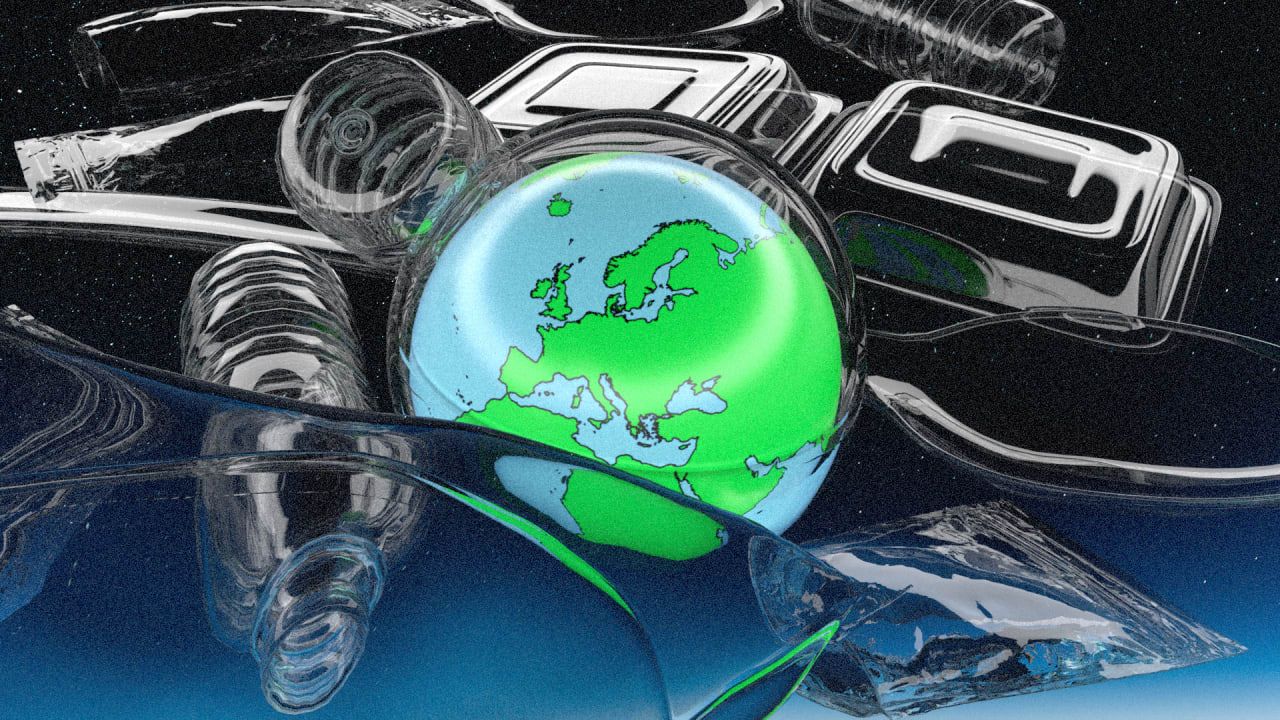
Take a moment to look around you. How much packaging do you see in front of you? On my desk I have two plastic wrappers from Kind bars I snacked on this morning, a plastic mailer that my new yoga pants came in, a plastic take-out container for the pad Thai I ordered for lunch, and clear plastic film that covered a birthday card that I sent to my aunt. We go through so many wrappers and packages every day, it doesn’t even register on many of us. We just chuck it in the trash or recycling when we’re done, without giving it a second thought. But it is vital that we give our wasteful packaging habits a closer look—and a new report from the consulting group McKinsey & Company explains just how high the stakes are.
Packaging is an enormous global industry that’s been driven by a century of clever design solutions, from Tetra Pak boxes and bubble wrap in the 1950s to plastic bottles in the 1970s, that have made our lives more convenient. Packaging has enabled a global economy where brands can safely transport their products across the planet very quickly, and the e-commerce revolution has boosted the industry even further. Beyond the increase in materials needed to send many more items, packaging has become essential to branding and product design: Many companies want to offer delightful unboxing experiences, with layers of paper and colorful stuffing, to stand out.
As McKinsey’s report states, all of those changes have been a boon for the packaging industry, which has seen immense growth over the last six years. But the result is a global waste crisis that consumers are only just beginning to comprehend. There are some optimistic signs: Some cities in the United States, and some countries in Europe, are banning plastic straws and single-use plastic utensils. Earlier this year a company called Loop began working with large brands on a pilot project that would package products in reusable containers that could be refilled. A startup called Rise Mrkt is currently in the midst of a crowdfunding campaign to launch a new online marketplace that will sell food in compostable materials.
The rise of environmentally conscious consumers and brands might seem to imply that packaging’s growth is on the decline, but the opposite is true. According to McKinsey, these measures are doing little to stop the avalanche of packaging. Here’s what we can expect over the next few years, if this growth continues apace.
Each individual piece of plastic packaging is cheap, which is why brands use it with such reckless abandon. But collectively, all the plastic wrap and mailers and bottles and cans amount to big business. Today, the packaging sector generates $900 billion in annual revenues worldwide, according to McKinsey. For comparison, this is about half of the size of the global footwear and apparel industry. Packaging manufacturers have every incentive to keep growing, even as consumers begin to become aware of how unsustainable packaging is.
McKinsey says that the packaging industry is on track to keep growing at a rate of 3.1% annually from now until 2022. A full 70% of this growth is coming from emerging markets, where a rising middle class is increasingly looking for the convenience that single-use plastic provides. While growth in North America is only going to increase by 1.2% annually, China and India are growing at rates of 5.2% and 5.8% annually during this time. Retail is growing quickly in these markets. In China, retail sales are already 80% higher than in the United States.
Even though awareness about the environmental consequences of plastic is growing, McKinsey reports that many consumers are not willing to pay more for more sustainable packaging. Companies that want to better accommodate consumers must find cost-effective ways to develop eco-friendly packaging, the report concludes. This won’t be easy, and indeed, these changes tend to be incremental. For instance, retailers and brands are increasingly using packaging with a higher percentage of recycled content. This is a small step in the right direction, but it will not dramatically decrease worldwide packaging waste any time soon.
Consumers’ desire for eco-friendly packaging is competing with our desire for even more convenience. McKinsey found that consumers primarily want packaging that makes their lives easier. In the food category, for instance, there’s plenty of demand for on-the-go, resealable, and microwave-ready packaging. And globally, the demand for ready meals is expected to grow by 20.5% between 2017 and 2022. As a result, packaging companies are investing in developing even more kinds of packaging, which is only fueling the industry further.
According to the consulting group, by 2025, 250 million metric tons of plastic are expected to end up in the oceans unless companies and governments act soon. Without action, the ocean will contain one ton of plastic for every three tons of fish. And marine animals often mistake plastic for food. When they consume plastic, they can choke or die of indigestion. But if they don’t, those fish end up in the food chain. Studies are beginning to reveal that humans are consuming tiny particles of plastic, which is toxic for our livers.
All in all, McKinsey’s data-dense report paints a picture of an industry that is booming. Even though consumers are beginning to understand how devastating all of this packaging is, they’re largely unwilling to sacrifice cost or convenience for the sake of the planet. That’s a shame because, as McKinsey points out, the packaging industry has a history of innovating to cater to changing consumer preferences. That’s how we got soda cans and TV dinners. If we put pressure on the packaging manufacturers to come up with more sustainable solutions—and we’re willing to pay for them—history suggests that the industry could rise to the challenge.
Avots: fast company